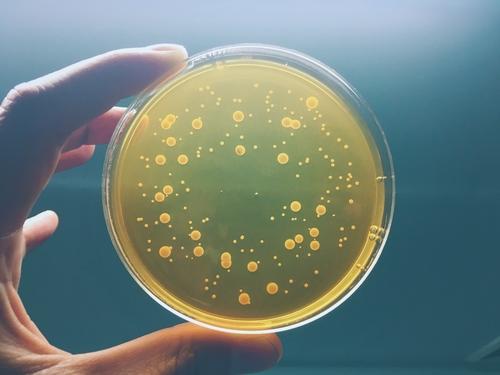Hospital acquired infections (HAI) are a frequent and costly problem. Prior estimates indicated that about 4% of patients admitted to the hospital develop new infections after admission (predominantly pneumonia, surgical site, gastrointestinal, urinary or blood borne). The CDC, as well as the entire medical community, has made several efforts to reduce the incidence of this problem including hand washing, checklists and standard approaches to invasive procedures associated with HAI and understanding factors within the hospital environment that facilitate or mitigate HAIs. In fact, the CDC gathered experts together in 2015 to consider
- Understanding transmission events related to patient room surfaces
- Measuring cleanliness
- Improving cleanliness by focusing on process
- Improving cleanliness by evaluating emerging interventions
A recent article in Science Translational Medicine entitled, Bacterial colonization and succession in a newly opened hospital, by Simon Lax et al. begins to answer some of the concerns about how the hospital designed environment influences the microbiomes on the patient, in their rooms, and within the hospital floor. They took 6523 samples from multiple sites within ten non-critical care rooms (allowing 24-hour visitation) in a hospital for a two month period before it was opened and then for the next year. It gives us a glimpse of the interaction of the microbial environment present in the hospital and present on the skin and other sites of patients. Every room sampled was cleaned daily with a quaternary ammonium solution and when the patient was discharged with a 1:1000 bleach solution – a standard of care. Here is what they found:
- Patients initially acquired bacteria from the rooms that predated their stay (bacteria associated with the previous patient) but over 24 hours their microbial signature began to influence the rooms biome. The similarity between the two increased with length of stay.
- The bacteria in patient rooms, particularly on bed rails, consistently resembled the skin microbiota of the patient occupying the room.
- Clinical factors such as chemotherapy, antibiotic usage, and surgical were weakly, at best, associated with the interaction of the two microbiotic communities.
- Only ambulatory status affected microbial similarity between the microbiotas of a patient and their room.
- Metagenomic analyses revealed that genes conferring antimicrobial resistance were consistently more abundant on room surfaces than on the skin of the patients inhabiting those rooms.
- Within a patient room on the same day, higher temperatures and higher illuminance were consistently associated with greater microbial dissimilarity between patient and surface microbial communities, whereas higher relative humidity and humidity ratio were consistently correlated with greater microbial similarity.
Despite regular standardized room cleaning, the hospital’s microbiome with its antibiotic resistant bacteria persists on room surfaces. Transmission of bacteria is in large part driven by our hands, Semmelweiss and the CDC are correct. Hand washing by everyone is critical. Interestingly, this should also include patients whose contact with side rails transferred their microbiome to the hospital. Lastly, perhaps room temperature and lighting, environmental factors we can control, may be helpful in decreasing HAIs. As the authors conclude,
“When patients enter a hospital, they arrive with complex and dynamic microbial assemblages that will be shaped by the treatment they receive and by the interactions they have with staff and with the building itself. … this foundational knowledge demonstrates the extent to which the microbial ecology of patient skin and of hospital surfaces are intertwined and may provide context to future studies of the transmission of hospital-acquired infections.”




